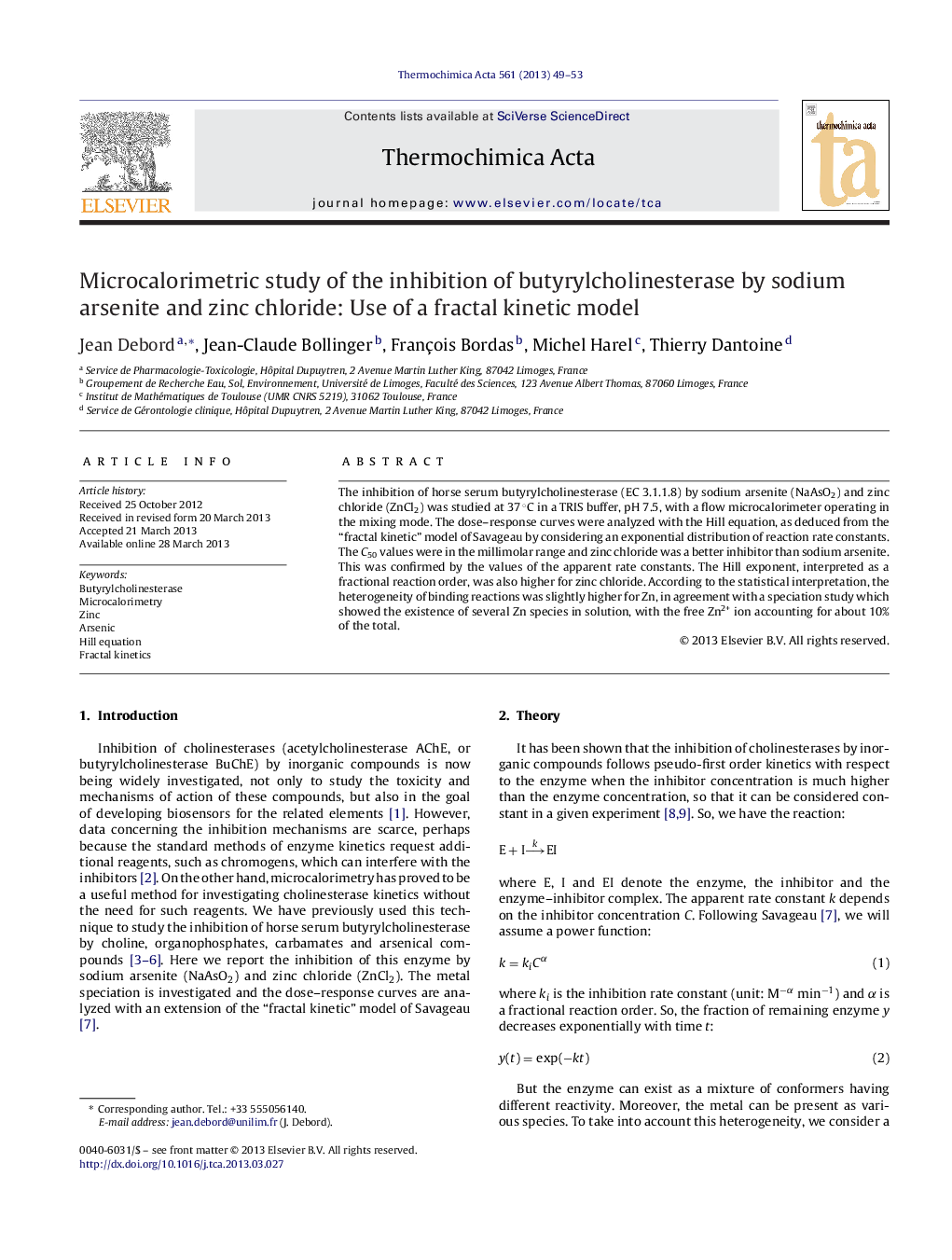| کد مقاله | کد نشریه | سال انتشار | مقاله انگلیسی | نسخه تمام متن |
|---|---|---|---|---|
| 673796 | 1459523 | 2013 | 5 صفحه PDF | دانلود رایگان |

• Zinc chloride is a better inhibitor of butyrylcholinesterase than sodium arsenite.
• In 0.1 M TRIS buffer, pH 7.5, 37 °C, Zn is present mainly as the Zn–TRIS complex.
• Arsenite is present mainly as the unionized arsenious acid.
• Dose–response curves are best fitted by the Hill equation.
• The Hill equation can be deduced from a “fractal kinetic” model.
The inhibition of horse serum butyrylcholinesterase (EC 3.1.1.8) by sodium arsenite (NaAsO2) and zinc chloride (ZnCl2) was studied at 37 °C in a TRIS buffer, pH 7.5, with a flow microcalorimeter operating in the mixing mode. The dose–response curves were analyzed with the Hill equation, as deduced from the “fractal kinetic” model of Savageau by considering an exponential distribution of reaction rate constants. The C50 values were in the millimolar range and zinc chloride was a better inhibitor than sodium arsenite. This was confirmed by the values of the apparent rate constants. The Hill exponent, interpreted as a fractional reaction order, was also higher for zinc chloride. According to the statistical interpretation, the heterogeneity of binding reactions was slightly higher for Zn, in agreement with a speciation study which showed the existence of several Zn species in solution, with the free Zn2+ ion accounting for about 10% of the total.
Figure optionsDownload as PowerPoint slide
Journal: Thermochimica Acta - Volume 561, 10 June 2013, Pages 49–53